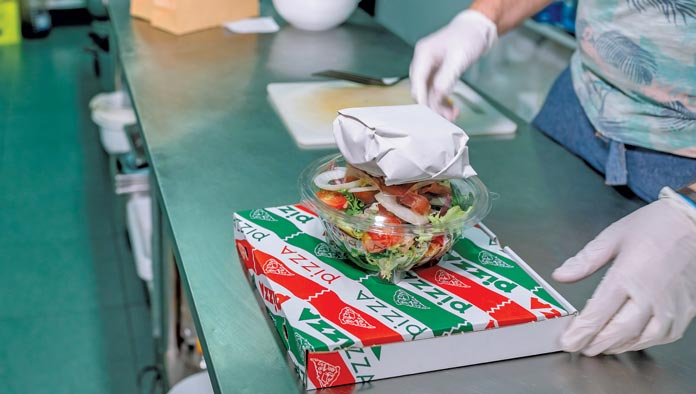
Article by Ryan Gallagher
Over the past year there have been a smorgasbord of obstacles in the Hospitality industry as the dining experience went #contactless. Technology providers rose to this challenge offering restaurants a variety of ways to digitize dining. Now at the dawn of another year, third-party delivery services make up a large part of the restaurant industry’s tech revolution.
Players like GrubHub, Uber Eats, Doordash, and others have created a new medium in which to order, pay for, and deliver meals. However, in typical 2020 fashion, restaurateurs are now starting to lose sight of their audience after #distancing from customers in this way. As a result, owners and managers in the hospitality industry must understand the implications for customer data when implementing third-party technology.
Third-Party Tech Owns Restaurant Customer Data
Listing a restaurant on a platform like Doordash is quite simple. You guessed it: the sign-up process is contactless and able to be completed digitally with little need for human interaction. However, despite the ability for third-party services to connect customer to business, the middlemen tell owners and managers very little about who they are serving.
Customer data is of high interest for any industry. Restaurants, like any other business, benefit from knowing information about their audience. In order to better serve a population, restaurants must gather information like names, emails, phone numbers, age, gender, hometown, order history and more. But when using a third-party services…
- GrubHub– When using Grubhub drivers, the service provides the customer’s first name, last initial, and phone number. When restaurants deliver after receiving an order through GrubHub, the service provides the same information plus the delivery address.
- Uber Eats– When using Uber Eats, the service provides the customer’s name, order information, address, and phone number. The service representatives share only this information due to the organization’s privacy policy.
- Doordash– When using Doordash, restaurants can see the customer’s name, delivery address, phone number, and that customer’s order history.
Instead of revealing data about customers, these third-party services give information about how customers interact with the restaurant. The information that is available includes: order history, popular menu items, and customer reviews. Restaurants using a third-party can access information of this type when using a service-provided tablet or when speaking with a partner service representative. While much of this data is very helpful, it does not tell the full story. In other words, there is a disconnection when restaurants use middlemen. In this situation, restaurants are not completely owning their customers.
How to Claim Customer Data
A large part of owning customers is knowing data or information about them. It’s not about contact tracing or listening in on private conversations, it’s all about knowing an audience in order to better serve them. Unfortunately, outsourcing online ordering and delivery is not the best way for a business to fully own its customers.
Businesses who choose to use this type of tech shouldn’t be too quick to change their attitude, though. Platforms like Doordash, Postmates, or Caviar are simply online directories that offer another avenue to drum up sales. However, restaurant owners must also realize that they cannot solely rely on third-party tech. So, restaurants have to find other ways to do business at the first-party level.
- Offer direct payment options for customers when they call the restaurant or visit the website. Furthermore, see what options the current POS system has for contactless transactions.
- Offer customer rewards or a loyalty programs for customers who will share data. For example, customers who subscribe to a restaurant’s email newsletter will receive a discount on their next meal.
- Implement tech solutions that help the restaurant gather and organize data. Technology solutions like Beambox allow businesses to capture customer information via WiFi. CRM software providers like CAKE or HubSpot are archives for organized customer data.
Customer Data is About Marketing & Sales
In order to create ROI when marketing and advertising, businesses must understand their customers and where these people get their information. Restaurant owners must ask themselves, How do my customers get their news and current information?
Most recently, the short answer is that consumers receive info online. A deeper look into a restaurant’s audience will reveal the individual areas where customers exist in a digital sense. This includes type of social media platforms in use, common online ordering apps, and more. Additionally, businesses must figure out how to offer information in a palatable way for the audience. Commonly, this might be through email newsletters, advertisements on social media, press releases on popular news outlets, and more.
Understanding the nuances of digital marketing is more important now than ever before. Knowledge in this area will put restaurants in a position to receive business from likely customers or past patrons. What’s more, when restaurant owners can harvest customer data to make predictions, the marketing and advertising techniques will be all the more fruitful. Going forward, businesses must make educated decisions when deciding which technology to implement. As the hospitality industry holds its breath for 2021, industry leaders can rest-assured that the technology is here to stay for the new (hopefully
prosperous) year.























